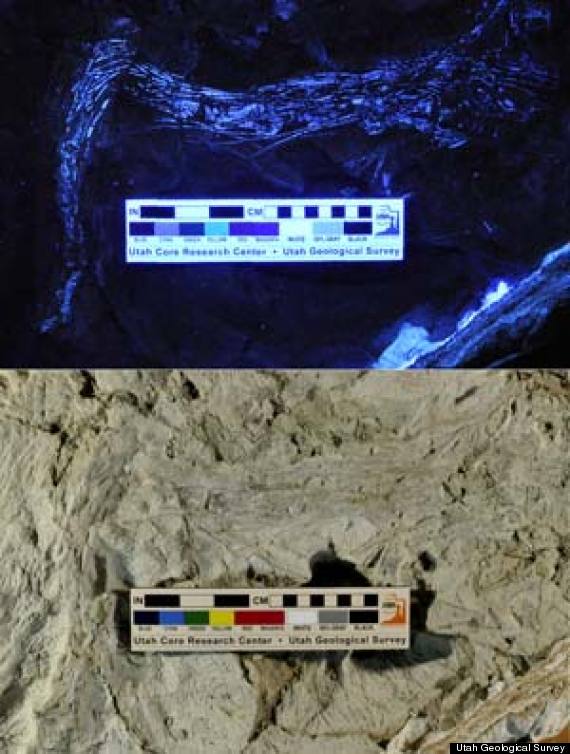
Those swift and scary raptor dinosaurs that took a turn in the 1993 sci-fi movie Jurassic Park seem to have their real-world roots in the American Southwest.
Fossils unearthed near Utah's Arches National Park have led Utah Geological Survey paleontologists to identify three new species of the birdlike dinos--and one of the species, which is about the size of a modern-day coyote, has been named Yurgovuchia doellingi.
"All we are finding are new species," Dr. James Kirkland, a paleontologist for the Survey, told Reuters. "I think there are places where what we are seeing [is] evolving populations."
Evidence suggests Y. doellingi could be a direct ancestor to the gigantic Utahraptor. The latter species was one of the largest known raptors, about the size of a giant grizzly bear. The smallest known raptors were about the size of mockingbirds (e.g., the four-winged Microraptor).
Where'd they get the name Yurgovuchia Doellingi? The genus name comes from "yurgovuch," the Ute word for coyote, biologist Dr. Phil Senter of Fayetteville University in North Carolina, told The Huffington Post. It's also a nod to the site where the Y. doellingi fossils were found, which rests on the Ute tribe's homeland in eastern Utah, according to Senter, who was closely involved in the research. The doellingi name honors Utah Geological Survey scientist Helmut Doelling for his years of research.
The research team in Utah first found Y. doellingi remains in 2005 when parts of the dino’s vertebral column and pelvis were unearthed. Fossilized bones of the other two raptor species were found nearby.

New dromaeosaurid tail skeleton viewed under ultraviolet (top) and visible light.
"These bones are diagnostic enough of the family that we know they are dromaeosaurs, which most people call the raptors, but we don’t have the rest of the skeleton in each case," Dr. Senter said. "What we do know of the three new finds is that they’re different enough to that they are three different species but we can’t tell much more than that."
One of the unnamed species, represented only by a pelvis bone, is the first member of the Velociraptorinae subfamily found in North America, Dr. Senter said. That's right--the velociraptors of Jurassic Park fame.
The researchers’ fossil finds were published May 15, 2012 in the journal PLoS ONE.
